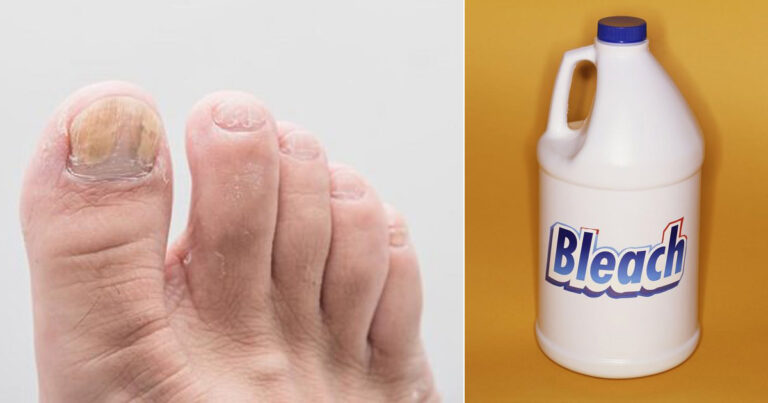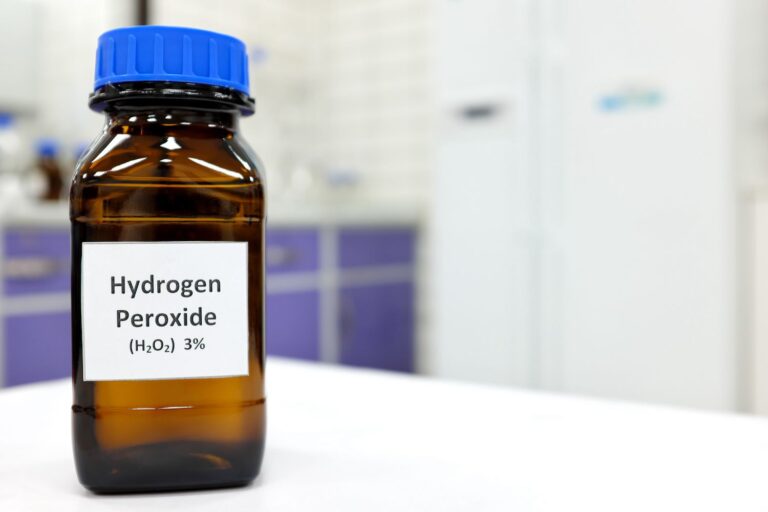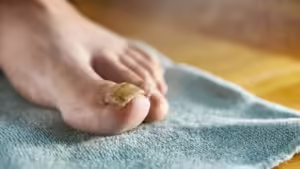Fungal nail infections are a common and persistent problem that can be both unsightly and uncomfortable. Many people who suffer from this condition are eager to find effective treatments, and one question that often arises is, “Does bleach kill fungal nail?” In this article, we will explore this topic in depth, looking at how bleach works, its effectiveness in treating fungal nail infections, and alternative treatment options. By the end of this article, you’ll have a clear understanding of whether bleach is a viable solution for fungal nails and what other treatments might be worth considering.
Understanding Fungal Nail Infections
What Causes Fungal Nail Infections?
Fungal nail infections, also known as onychomycosis, are caused by various types of fungi, including dermatophytes, yeasts, and molds. These fungi thrive in warm, moist environments and can easily invade the nails through tiny cuts or separations between the nail and the nail bed. Once the fungus takes hold, it can cause the nail to become thick, discolored, and brittle. In severe cases, the nail may even separate from the nail bed.
Symptoms of Fungal Nail Infections
Fungal nail infections often start as a small white or yellow spot under the tip of the nail. As the infection progresses, the following symptoms may develop:
- Thickened nails
- Discoloration (yellow, brown, or white)
- Brittleness or crumbling
- Distorted nail shape
- Foul odor
- Separation of the nail from the nail bed
Risk Factors for Fungal Nail Infections
Certain factors can increase the risk of developing a fungal nail infection. These include:
- Age: Older adults are more prone to fungal nail infections due to reduced blood circulation and slower nail growth.
- Sweating: Excessive sweating can create a moist environment that encourages fungal growth.
- Footwear: Tight or non-breathable shoes can trap moisture and provide a breeding ground for fungi.
- Medical Conditions: Conditions like diabetes, psoriasis, and weakened immune systems can make individuals more susceptible to fungal infections.
- Public Areas: Walking barefoot in public places like swimming pools, gyms, and locker rooms can increase the risk of exposure to fungi.
How Bleach Works as a Disinfectant
What is Bleach?
Bleach is a common household disinfectant known for its ability to kill bacteria, viruses, and fungi. The most commonly used type of bleach is sodium hypochlorite, a chemical compound that effectively destroys microorganisms by breaking down their cell walls and interfering with their enzymes.
The Science Behind Bleach’s Disinfecting Power
Bleach works by releasing chlorine, which reacts with water to form hypochlorous acid. This acid is highly effective at killing a wide range of pathogens, including fungi. When applied to surfaces, bleach can rapidly break down the proteins and lipids in the cell walls of microorganisms, leading to their destruction.
Common Uses of Bleach
Bleach is widely used for:
- Disinfecting surfaces in homes and healthcare settings
- Whitening and removing stains from fabrics
- Sanitizing water for drinking
- Killing mold and mildew
Does Bleach Kill Fungal Nail?
The Theory Behind Using Bleach for Fungal Nails
The idea of using bleach to treat fungal nail infections stems from its effectiveness in killing fungi on surfaces. Some people believe that applying bleach to the affected nail can similarly eradicate the fungal infection. However, while bleach is a powerful disinfectant, its use on the human body, especially on sensitive areas like the nails, requires careful consideration.
Applying Bleach to Fungal Nails: Methods and Precautions
Several methods have been suggested for using bleach to treat fungal nails. These include:
- Diluted Bleach Soak: Soaking the affected nails in a solution of diluted bleach (one part bleach to ten parts water) for 10-15 minutes a day.
- Bleach Paste: Mixing bleach with water to create a paste and applying it directly to the affected nails.
- Bleach Pen: Using a bleach pen to apply bleach directly to the nail surface.
Precautions:
While these methods may seem simple, they come with risks. Bleach is a caustic substance that can cause skin irritation, burns, and damage to the nail and surrounding skin. It’s essential to use bleach cautiously and avoid overexposure. Diluting bleach and limiting the duration of exposure can help reduce the risk of adverse effects.
Effectiveness of Bleach for Fungal Nails: What the Research Says
Scientific research on the effectiveness of bleach as a treatment for fungal nail infections is limited. Anecdotal evidence suggests that bleach may help in some cases, particularly in mild infections. However, there is no strong scientific consensus supporting bleach as a reliable or safe treatment for onychomycosis. More read here: What Kills Toenail Fungus Instantly: An In-Depth Guide
Dermatologists typically do not recommend bleach as a first-line treatment for fungal nails due to its potential to cause harm and its inconsistent results.
Alternative Treatments for Fungal Nail Infections
Over-the-Counter Treatments
Several over-the-counter (OTC) treatments are available for fungal nail infections, including:
- Antifungal Creams and Ointments: Products containing ingredients like clotrimazole, miconazole, or terbinafine can be applied directly to the nail.
- Medicated Nail Polish: Ciclopirox is a prescription nail lacquer that can be applied to the affected nails daily.
- Antifungal Sprays and Powders: These can help prevent the spread of infection and keep the feet dry.
Prescription Medications
For more severe or persistent cases, doctors may prescribe oral antifungal medications or stronger topical treatments. These include:
- Oral Antifungals: Medications like terbinafine (Lamisil) and itraconazole (Sporanox) are often prescribed for several weeks or months to eliminate the infection.
- Topical Antifungals: Stronger prescription creams or gels may be recommended, especially if oral medications are not suitable.
Home Remedies
In addition to OTC and prescription treatments, some home remedies are believed to help with fungal nail infections:
- Tea Tree Oil: Known for its antifungal properties, tea tree oil can be applied directly to the nail.
- Apple Cider Vinegar: Soaking the affected nails in a mixture of apple cider vinegar and water may help reduce fungal growth.
- Vicks VapoRub: Some people report success in using this mentholated ointment to treat fungal nails, though evidence is largely anecdotal.
Medical Procedures
In cases where fungal nails do not respond to medication, medical procedures may be necessary:
- Laser Treatment: Laser therapy targets and destroys the fungi under the nail without damaging surrounding tissue.
- Nail Removal: In severe cases, the entire nail may need to be surgically removed to allow for a new, healthy nail to grow.
Preventing Fungal Nail Infections
Proper Foot Hygiene
Maintaining good foot hygiene is crucial in preventing fungal nail infections. This includes:
- Washing feet daily with soap and water
- Drying feet thoroughly, especially between the toes
- Keeping nails trimmed and clean
- Wearing breathable shoes and moisture-wicking socks
- Changing socks regularly
Protecting Your Nails
To reduce the risk of fungal infections, consider the following protective measures:
- Avoid walking barefoot in public places
- Use antifungal powders or sprays in shoes
- Disinfect nail clippers and other tools regularly
- Wear shoes that fit properly and allow your feet to breathe
Strengthening Your Immune System
A strong immune system can help your body fight off fungal infections. Eating a balanced diet, getting regular exercise, and managing stress can all contribute to better immune function.
When to See a Doctor
Signs You Need Professional Help
If you suspect you have a fungal nail infection, it’s important to seek medical advice, especially if:
- The infection is causing pain or discomfort
- The nail is severely discolored or deformed
- The infection has spread to other nails or parts of the body
- Over-the-counter treatments have not worked
Diagnostic Tests
A healthcare provider can diagnose a fungal nail infection by examining the affected nail and possibly taking a sample for laboratory analysis. This helps to confirm the presence of fungi and determine the best course of treatment.
Professional Treatment Options
Doctors may recommend a combination of treatments, including prescription medications, topical treatments, and in some cases, surgical intervention. Following a doctor’s advice is essential for effectively treating and managing fungal nail infections.
Conclusion: Does Bleach Kill Fungal Nail?
In conclusion, while bleach has strong disinfectant properties and can kill fungi on surfaces, its effectiveness in treating fungal nail infections is uncertain and potentially risky. Bleach can cause skin irritation and damage, making it a less-than-ideal solution for fungal nails. There are safer and more effective treatments available, ranging from over-the-counter antifungal products to prescription medications and medical procedures.
If you’re dealing with a fungal nail infection, it’s best to consult a healthcare provider to determine the most appropriate treatment for your situation. Proper foot hygiene, preventive measures, and timely medical intervention can help you manage and overcome fungal nail infections more effectively.













